Search Result
Results for "
erythrocytes
" in MedChemExpress (MCE) Product Catalog:
2
Biochemical Assay Reagents
7
Isotope-Labeled Compounds
| Cat. No. |
Product Name |
Target |
Research Areas |
Chemical Structure |
-
- HY-129064
-
|
SOD
|
SOD
|
Inflammation/Immunology
Cancer
|
|
Superoxide dismutase, Porcine erythrocytes (SOD) is the only antioxidant enzyme that scavenges the superoxide anion by converting this free radical to oxygen and hydrogen peroxide, thus preventing peroxynitrite production and further damage. Superoxide dismutase, Porcine erythrocytes is extensively researched and used in anti-inflammatory, antitumor, radiation protection, and antisenility applications .
|
-

-
- HY-P1775
-
|
EC 4.2.1.1
|
Carbonic Anhydrase
|
Neurological Disease
Metabolic Disease
Cancer
|
Carbonic anhydrase, Bovine erythrocytes (EC 4.2.1.1) is ubiquitous zinc-containing metalloenzyme present in prokaryotes and eukaryotes. Carbonic anhydrase can catalyze reversible conversion of carbon dioxide to bicarbonate and protons. Carbonic anhydrase can be used for the research of cancer, glaucoma, obesity and epilepsy .
|
-
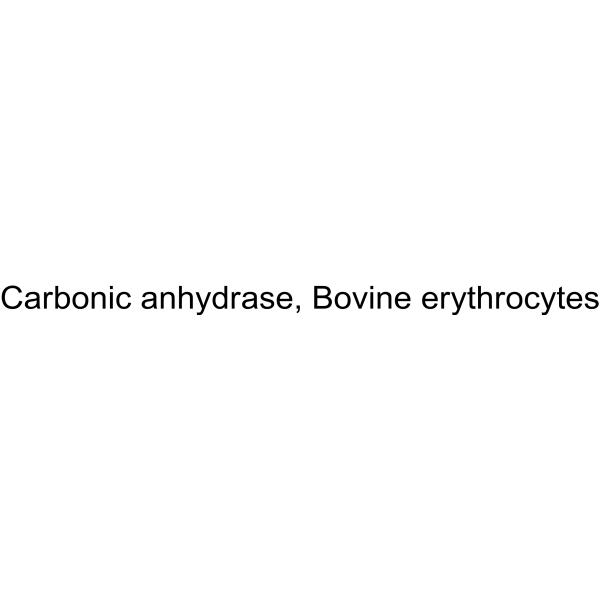
-
- HY-D0844S
-
|
L-Glutathione oxidized-13C4,15N2; GSSG-13C4,15N2; Oxiglutatione-13C4,15N2
|
Endogenous Metabolite
Reactive Oxygen Species
|
Metabolic Disease
|
|
Glutathione oxidized- 13C4, 15N2 is the 13C and 15N labeled Glutathione oxidized (HY-D0844). Glutathione oxidized is produced by the oxidation of glutathione. Detoxification of reactive oxygen species is accompanied by production of glutathione oxidized. Glutathione oxidized can be used for the research of sickle cells and erythrocytes[1][2].
|
-

-
- HY-139573
-
|
FT-4202
|
Pyruvate Kinase
|
Cardiovascular Disease
|
|
Etavopivat is a potent, selective, and orally active erythrocyte pyruvate kinase (PKR) activator. Etavopivat has potent antisickling effects that can be used in studies of sickle cell disease and other haemoglobinopathies .
|
-
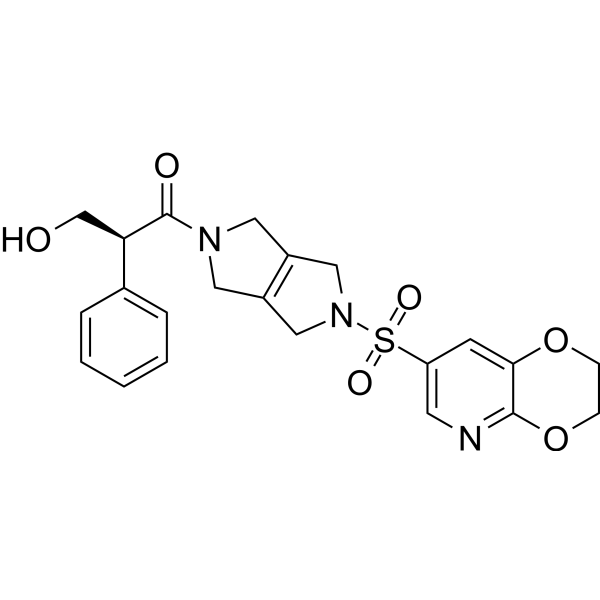
-
- HY-B1829
-
|
Dexamethasone 21-phosphate
|
Glucocorticoid Receptor
|
Inflammation/Immunology
|
|
Dexamethasone phosphate (Dexamethasone 21-phosphate) is a biologically inactive compound which undergoes dephosphorylation by intra-erythrocyte enzymes. The active metabolite, dexamethasone, is then released into the circulation by simple passive diffusion through cell membranes. Dexamethasone phosphate-encapsulated erythrocyte has the potential for steroid-dependent ulcerative colitis research .
|
-
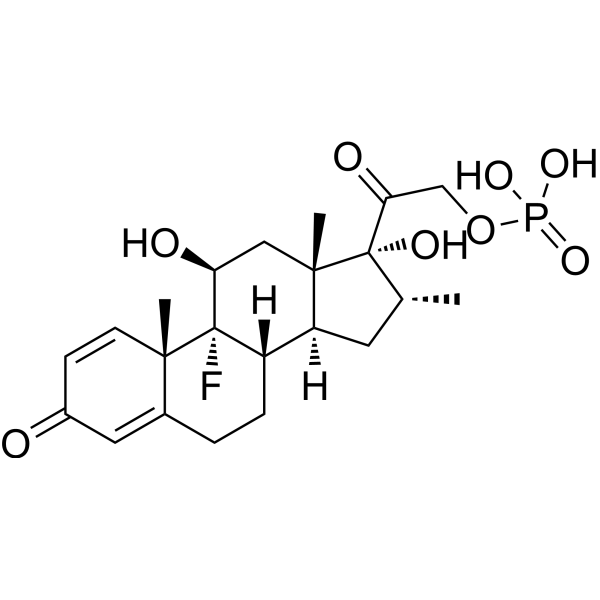
-
- HY-111355B
-
|
|
Endogenous Metabolite
|
Metabolic Disease
|
|
Cholesteryl sulfate sodium is an important regulatory molecule. Cholesterol sulfate sodium is a component of cell membranes where it has a stabilizing role and protects erythrocytes from osmotic lysis and regulating sperm capacitation .
|
-
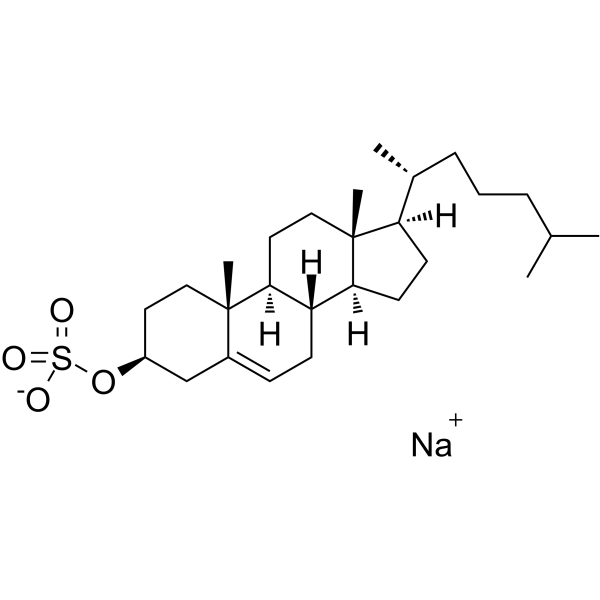
-
- HY-N3087
-
|
|
Others
|
Others
|
|
Phaseollin is an isoflavonoid phytoalexin that can be isolated from Phaseolus vulgaris . Phaseollin is toxic to bean hypocotyl and endocarp cells, and causes a complete lysis of sheep erythrocytes .
|
-
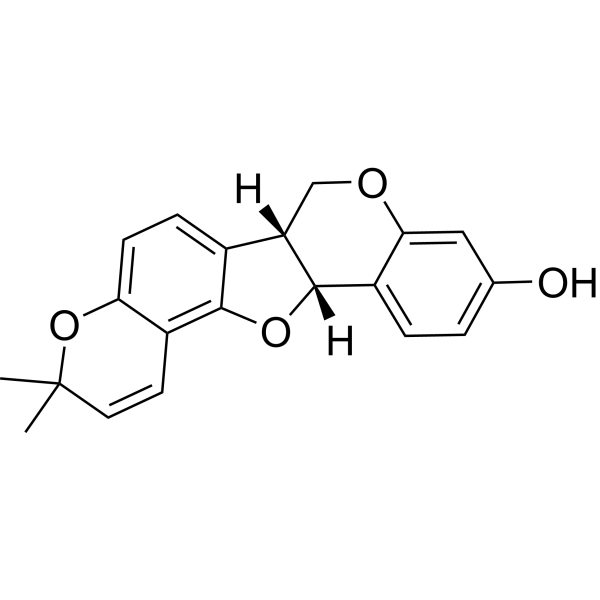
-
- HY-D0844
-
|
L-Glutathione oxidized; GSSG; Oxiglutatione
|
Endogenous Metabolite
Reactive Oxygen Species
|
Metabolic Disease
|
|
Glutathione oxidized (L-Glutathione oxidized) is produced by the oxidation of glutathione. Detoxification of reactive oxygen species is accompanied by production of glutathione oxidized. Glutathione oxidized can be used for the research of sickle cells and erythrocytes .
|
-
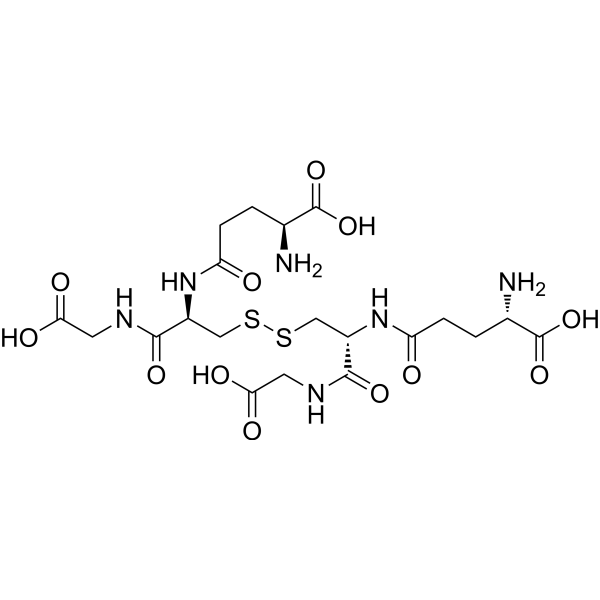
-
- HY-P1629
-
|
|
Bacterial
Fungal
Antibiotic
|
Infection
|
|
Temporin A is a short alpha-helical antimicrobial peptide isolated from the skin of the frog Rana temporaria. Temporin A is effective against a broad spectrum of Gram-positive bacteria. Temporin A interacts directly with the cell membrane of the microorganism and it is non-toxic to erythrocytes at concentrations that are antimicrobial. Temporin A also has antifungal activities (against yeast-like Candida albicans) .
|
-

-
- HY-147327
-
|
|
Others
|
Cancer
|
|
N-Formylsarcolysine has antitumor activity, and inhibits leukemia by increasing the Hb and erythrocyte levels and decreasing the number of leukocytes. N-Formylsarcolysine also involves in glioblastoma and other diseases research .
|
-
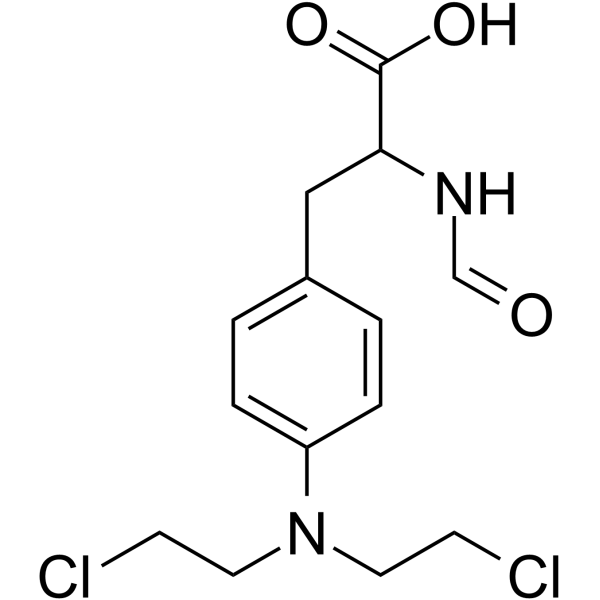
-
- HY-123962
-
|
|
Others
|
Metabolic Disease
|
|
G6PD activator AG1 is a potent and selective glucose-6-phosphate dehydrogenase (G6PD) activator with an EC50 of 3 µΜ . G6PD activator AG1 reduces hemolysis of human erythrocytes .
|
-
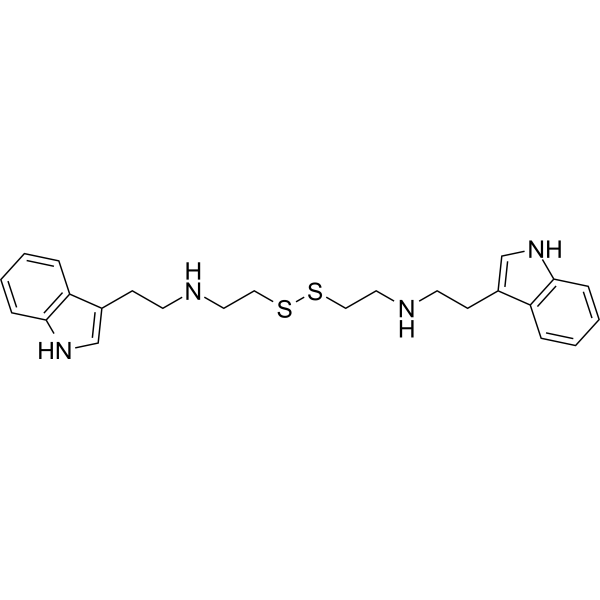
-
- HY-P99720
-
|
ACE-536; luspatercept–aamt
|
TGF-beta/Smad
|
Metabolic Disease
|
|
Luspatercept (ACE-536) is a recombinant modified ActRIIB fusion protein that binds with transforming growth factor β superfamily ligands. Luspatercept increases the erythrocyte numbers and promotes maturation of erythroid precursors. Luspatercept binds with GDF11 and inhibits Smad2/3 signaling. Luspatercept can be used for the research of anemia .
|
-

-
- HY-W008344
-
|
|
Nucleoside Antimetabolite/Analog
|
Others
|
|
2-Chloroadenosine, a stable adenosine analogue, protects against long term development of ischaemic cell loss in the rat hippocampus. 2-Chloroadenosine is an apparent competitive inhibitor of uridine influx (apparent Ki=33 μM) and high-affinity nitrobenzylthioinosine binding (apparent Ki=0.18 mM). 2-Chloroadenosine is a transported permeant for the nucleoside transporter in human erythrocytes .
|
-
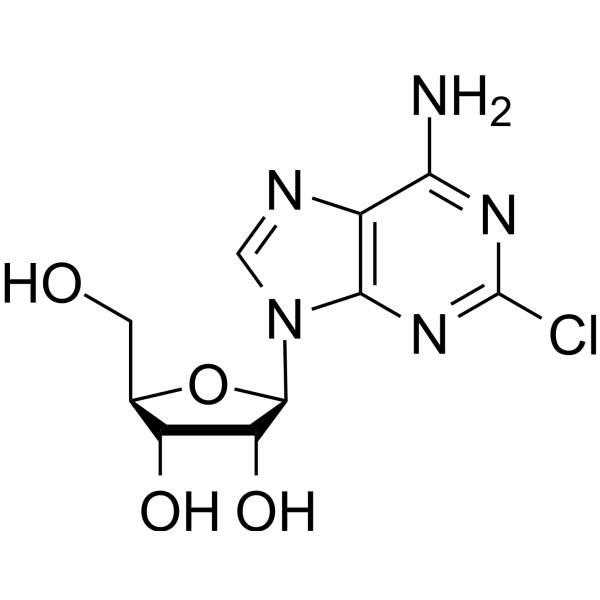
-
- HY-129560
-
-
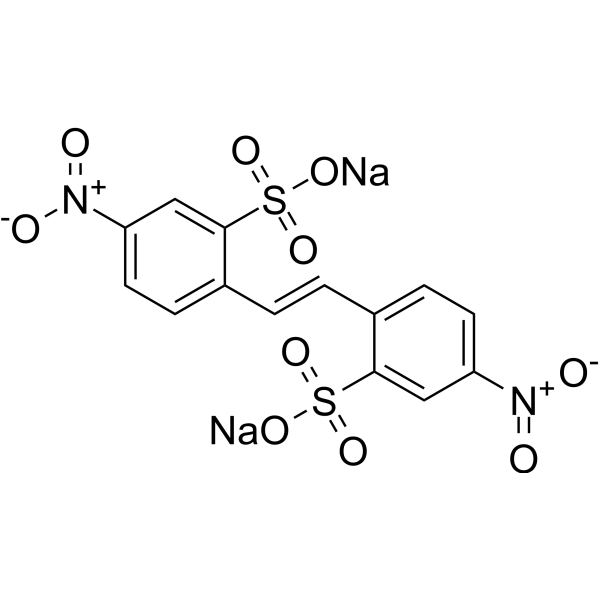
-
- HY-12784
-
-
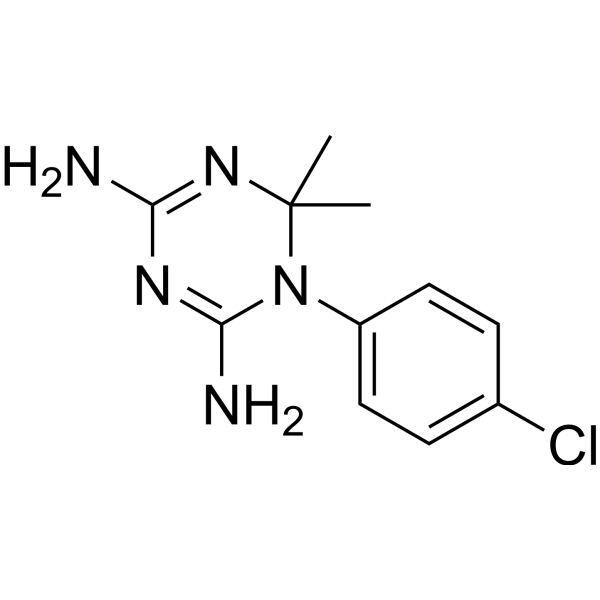
-
- HY-12784A
-
-
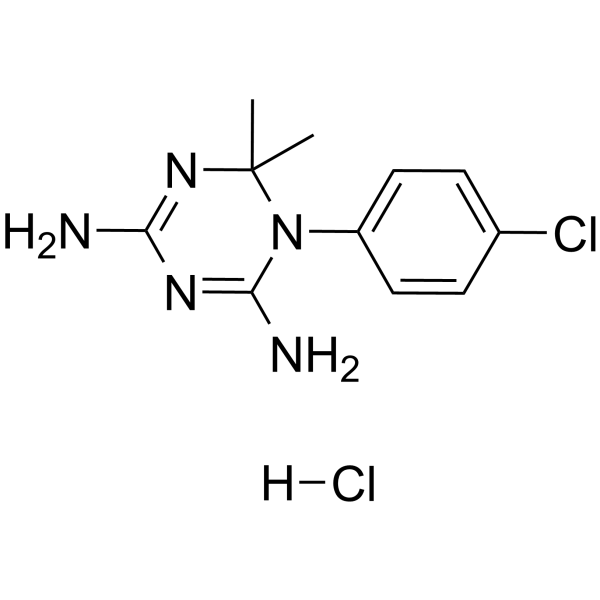
-
- HY-Y0525
-
|
2,2'-Azodiisobutyramidine dihydrochloride
|
|
|
|
AAPH (2,2'-Azodiisobutyramidine dihydrochloride) has an effect of radical generation. AAPH induces oxidative stress and erythrocyte hemolysis .
|
-
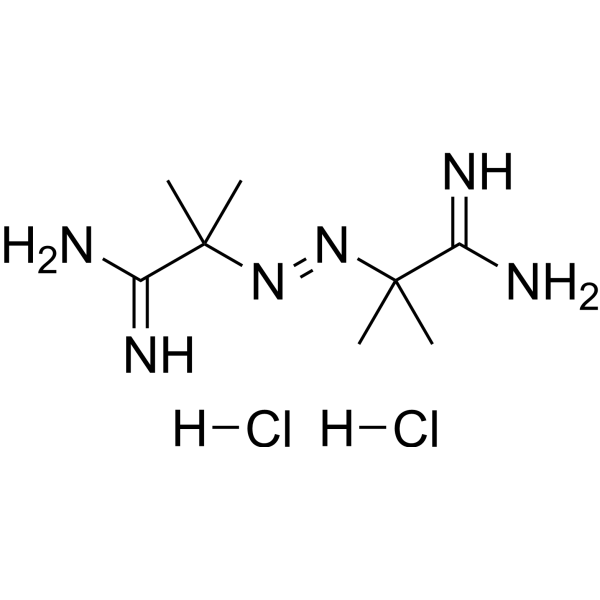
-
- HY-110389
-
|
|
Cholinesterase (ChE)
|
Neurological Disease
|
|
Pitofenone hydrochloride, a spasmolytic compound, inhibits the acetylcholinesterase (AChE) activity from bovine erythrocytes and from electric eel with Kis of 36 and 45 μM, respectively.
|
-
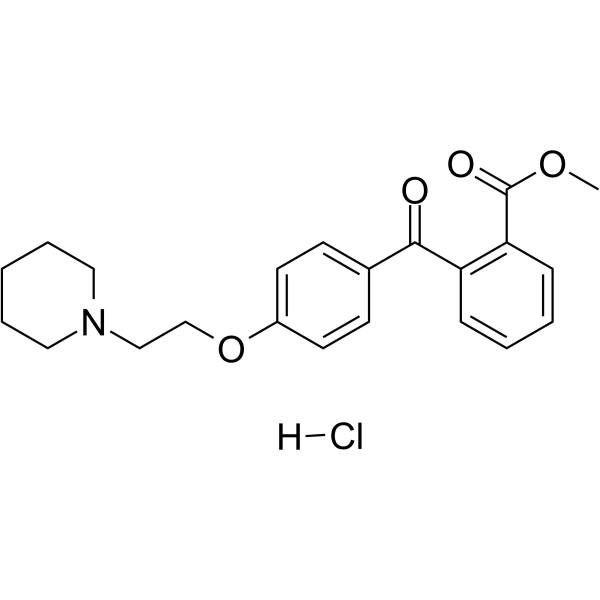
-
- HY-12784AS
-
|
|
Parasite
Drug Metabolite
|
Infection
|
|
Cycloguanil-d4 (hydrochloride) is the deuterium labeled Cycloguanil hydrochloride. Cycloguanil hydrochloride, the active metabolite of Proguanil, acts on malaria schizonts in erythrocytes and hepatocytes[1].
|
-

-
- HY-B0312S1
-
|
|
Phosphodiesterase (PDE)
|
Cardiovascular Disease
|
|
Dipyridamole-d16 is the deuterium labeled Dipyridamole. Dipyridamole (Persantine) is a phosphodiesterase inhibitor that blocks uptake and metabolism of adenosine by erythrocytes and vascular endothelial cells.
|
-
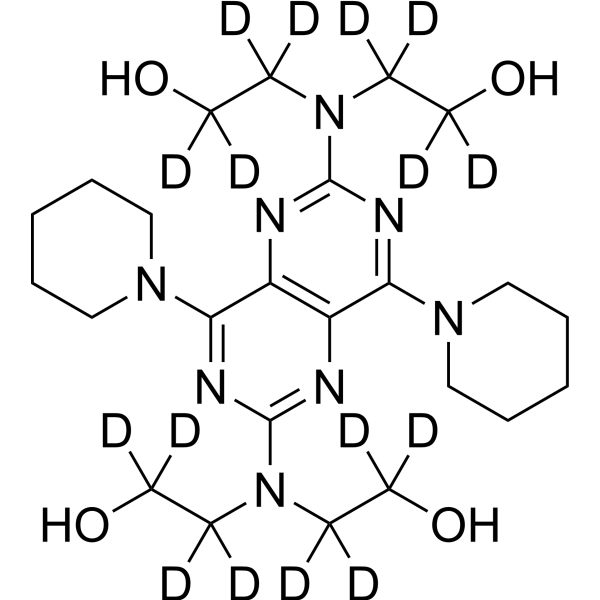
-
- HY-B0312S
-
|
|
Phosphodiesterase (PDE)
|
Cardiovascular Disease
|
|
Dipyridamole-d20 is the deuterium labeled Dipyridamole. Dipyridamole is a phosphodiesterase inhibitor that blocks uptake and metabolism of adenosine by erythrocytes and vascular endothelial cells[1][2][3].
|
-
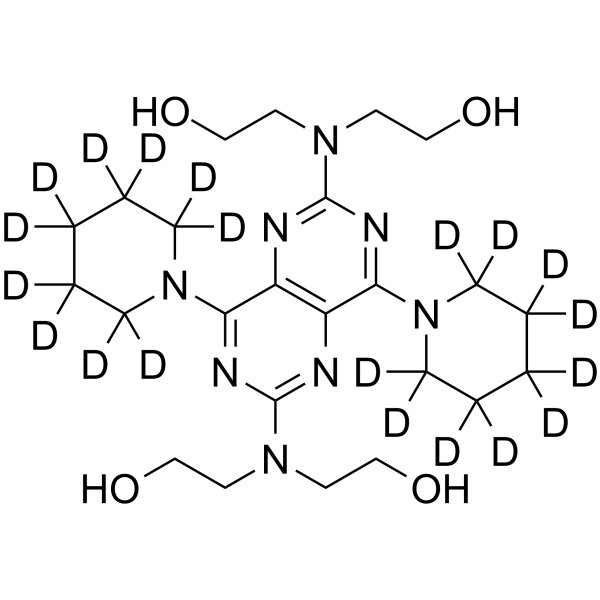
-
- HY-W016188
-
|
|
Cholinesterase (ChE)
|
Others
|
|
1-Naphthyl acetate is an attractive chromogenic substrate for the detection of erythrocyte acetylcholinesterase (AChE) activity. 1-Naphthyl acetate has the potential to detect organophosphorus pesticide (OP) poisoning .
|
-
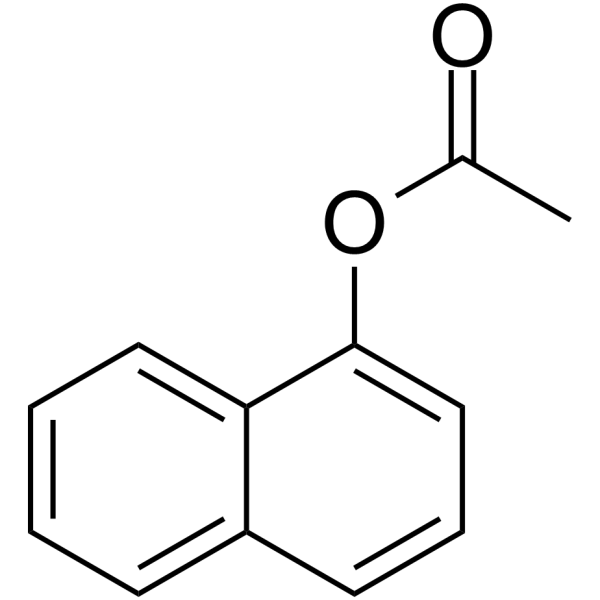
-
- HY-100322
-
|
|
Chloride Channel
|
Cardiovascular Disease
|
|
H100 is a Cl - transport inhibitor, with partial effects against both the NaK2Cl cotransporter and the Band 3 anion exchanger, but no effect against KCl cotransporter, in human erythrocytes.
|
-

-
- HY-B1726
-
|
Holocaine
|
|
|
|
Phenacaine (Holocaine) is a local anesthetic. Phenacaine inhibits the specific calmodulin-dependent stimulation of erythrocyte Ca 2+-ATPase and cyclic nucleotide phosphodiesterases from brain and heart .
|
-

-
- HY-W371164
-
-
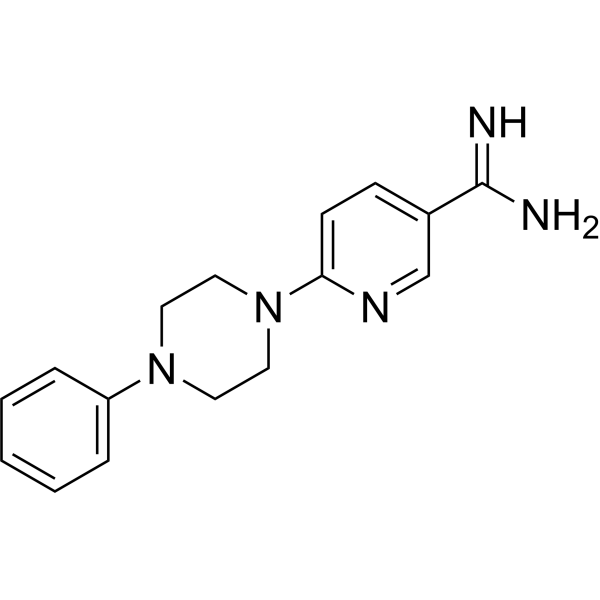
-
- HY-139573A
-
|
(Rac)-FT-4202
|
Pyruvate Kinase
|
Cardiovascular Disease
|
|
(Rac)-Etavopivat ((Rac)-FT-4202) is an isomer of Etavopivat (HY-139573). Etavopivat is an orally active erythrocyte pyruvate kinase-R (PKR) activator that can be used in studies of sickle cell disease and other haemoglobinopathies .
|
-

-
- HY-145996
-
|
|
Bacterial
|
Infection
|
|
STC314 is a small polyanion that interact electrostatically with histones. STC314 blocks disruption of lipid-bilayers by histones that inhibits the cytotoxic, platelet-activating and erythrocyte-damaging effects of histones. STC314 has anti-infective effects and can be uesd for sepsis research .
|
-
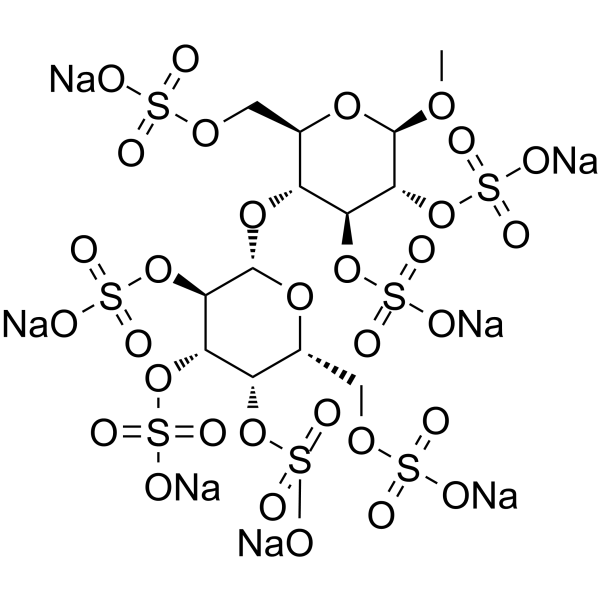
-
- HY-119491
-
|
|
Biochemical Assay Reagents
|
Others
|
|
Ethyl Tricosanoate is a long-chain saturated fatty acid ethyl ester, which exists in small amounts in C. conicum and C. conicum. Free acid reduces the hemolytic activity of Staphylococcus aureus delta toxin on human erythrocytes. Both ethyl ester and free acid can be used as standards for the analysis of lipid mixtures.
|
-
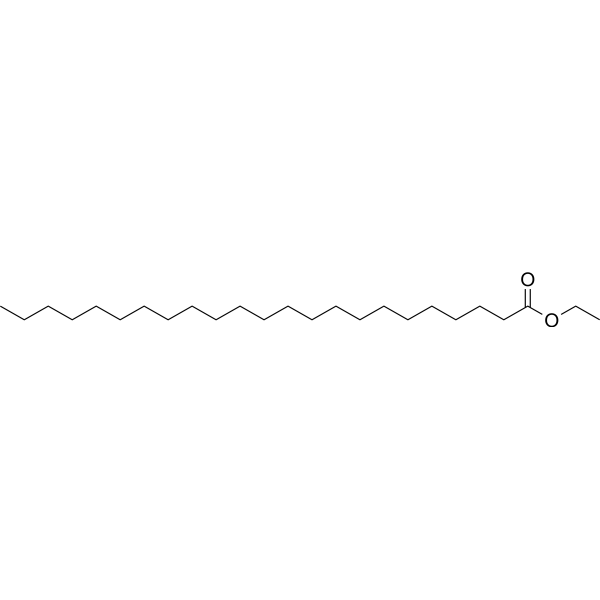
-
- HY-151575
-
|
|
GSK-3
|
Infection
|
|
PfGSK3/PfPK6-IN-2 is a potent dual PfGSK3/PfPK6 (Plasmodium falciparum GSK3/PK6) inhibitor (IC50: 172 nM and 11 nM respectively). PfGSK3/PfPK6-IN-2 can be used in the research of Malaria .
|
-
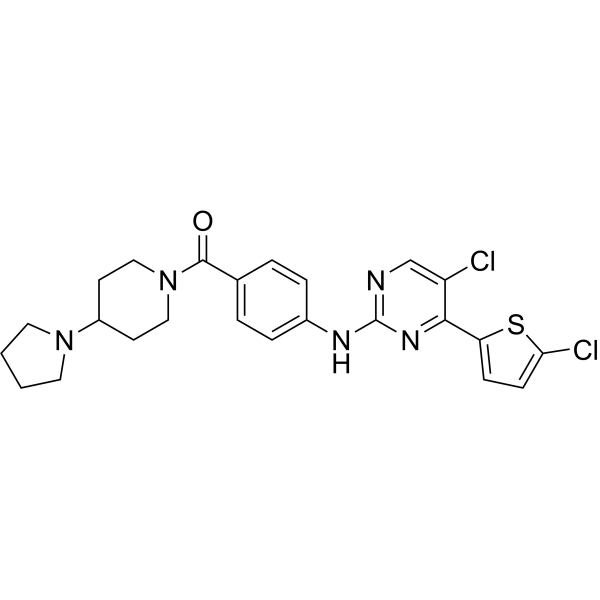
-
- HY-113854
-
|
|
Glucocorticoid Receptor
|
Cardiovascular Disease
Endocrinology
|
|
AZD2906 is a selective glucocorticoid receptor (GR) agonist, increases micronucleated immature erythrocytes in the bone marrow of rats. AZD2906 shows IC50s of 2.2, 0.3, 41.6 and 7.5 nM at GR in human, rat PBMC and human, rat whole blood, respectively .
|
-
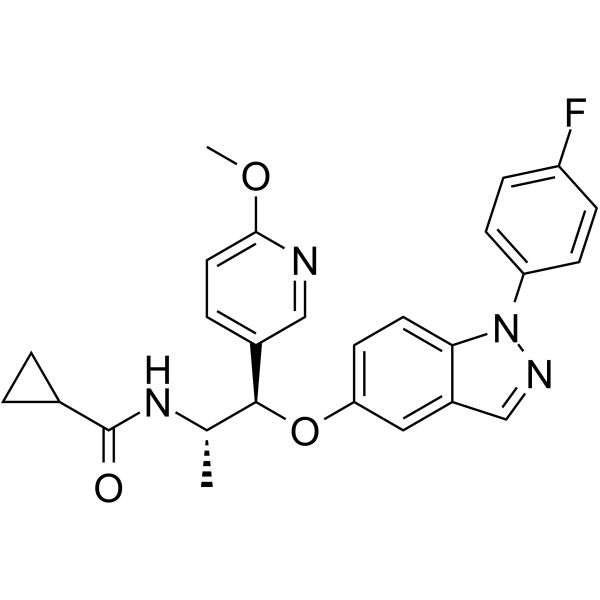
-
- HY-103319
-
|
R 24571
|
Autophagy
Calmodulin
|
Neurological Disease
Cancer
|
|
Calmidazolium chloride (R 24571) is a calmodulin antagonist, antagonizing CaM-dependent phosphodiesterase and calmodulin-induced activation of erythrocyte Ca2+-transporting ATPase with IC50s of 0.15 and 0.35 μM, respectively . Also in anti-cancer research . Calmidazolium binds to calmodulin with a Kd of 3 nM.
|
-
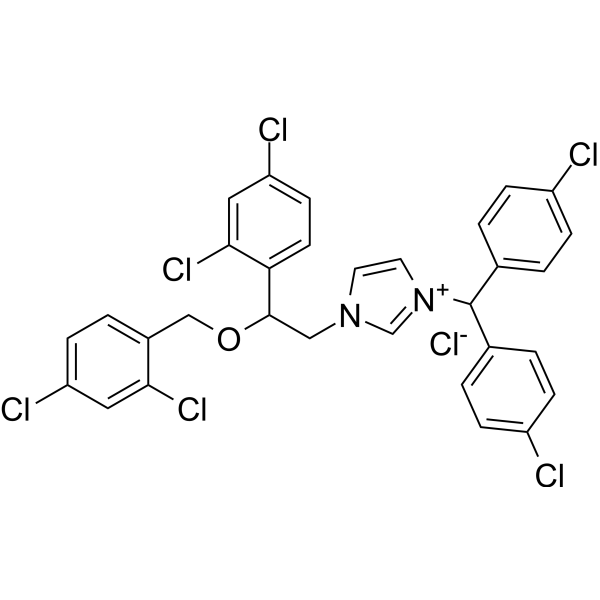
-
- HY-151437
-
|
|
Fungal
|
Infection
|
|
Antifungal agent 40 is an antifungal agent which extends into the narrow hydrophobic pocket II of C.alb. CYP51. Antifungal agent 40 has an inhibitory effect on lanosterol 14α-demethylase (CYP51). Antifungal agent 40 inhibits biofilm formation .
|
-
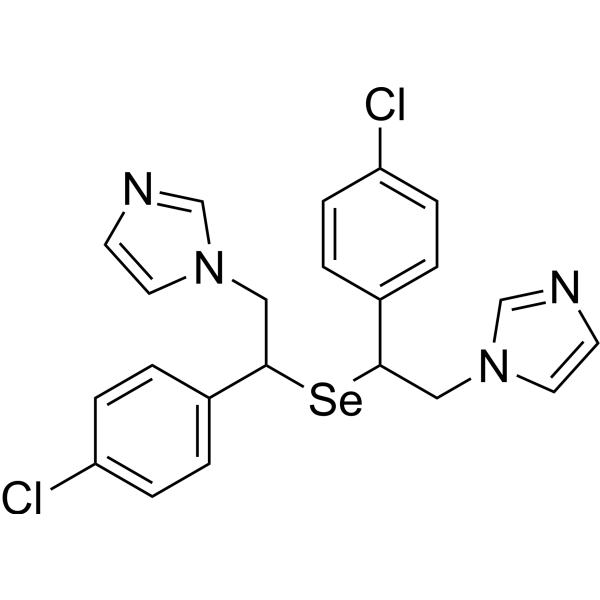
-
- HY-151440
-
|
|
Fungal
|
Infection
|
|
Antifungal agent 42 is an antifungal agent. Antifungal agent 42 has an inhibitory effect on lanosterol 14α-demethylase (CYP51) of C.alb.. Antifungal agent 42 inhibits biofilm formation .
|
-
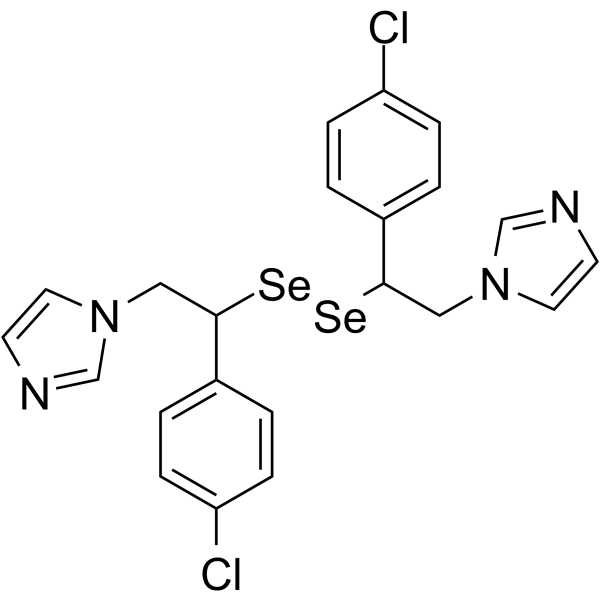
-
- HY-151442
-
|
|
Fungal
|
Infection
|
|
Antifungal agent 43 (compound B05) is an antifungal agent. Antifungal agents 43 has antifungal activity by inhibiting biofilm formation. Antifungal agent 43 has low toxicity in human cancer cell lines .
|
-
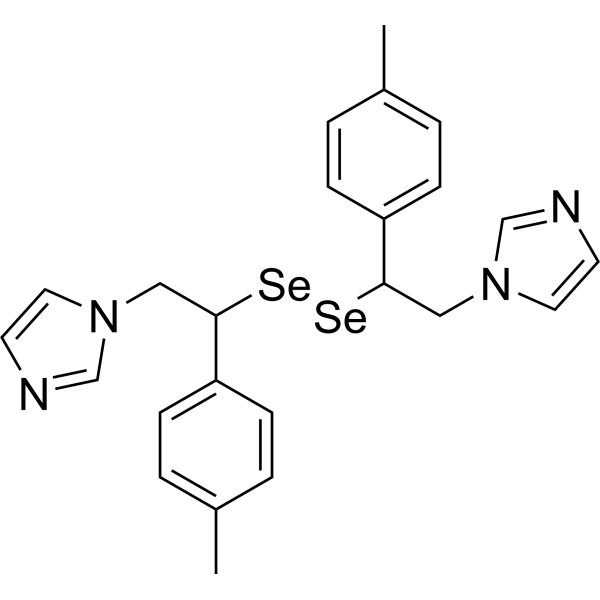
-
- HY-W016433
-
|
|
DNA/RNA Synthesis
|
Others
|
|
2-Aminofluorene is a synthetic chemical insecticide. 2-Aminofluorene is a genotoxin. 2-Aminofluorene can be used in the research of DNA adduct structure, DNA repair, carcinogenesis, and mutagenesis .
|
-
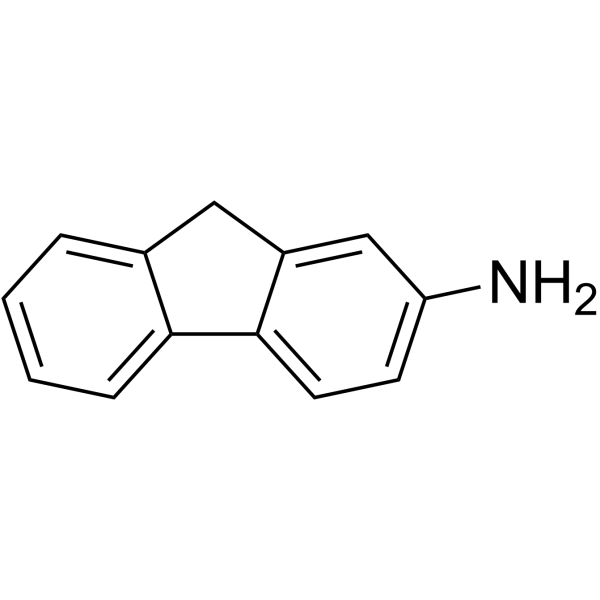
-
- HY-12542S
-
|
F 368-13C3
|
Isotope-Labeled Compounds
Glutathione Reductase
|
Neurological Disease
Inflammation/Immunology
|
|
Dantrolene- 13C3 is the 13C3 labeled Dantrolene. Dantrolene (F368), a muscle relaxant, non-competitively inhibits human erythrocyte glutathione reductase. Ki and IC50 values are 111.6 μM and 52.3 μM, respectively. Dantrolene is a ryanodine receptor antagonist and Ca2+ signaling stabilizer. Dantrolene can be used for the research of muscle spasticity, malignant hyperthermia, Huntington's disease and other neuroleptic malignant syndrome.
|
-

-
- HY-126073
-
|
|
Aquaporin
|
Inflammation/Immunology
Cancer
|
|
DFP00173 is a potent and selective aquaporin-3 (AQP3) inhibitor. DFP00173 inhibits mouse and human AQP3 with an IC50 of ∼0.1-0.4 μM. DFP00173 is selective for AQP3 over the homologous AQP isoforms AQP7 and AQP9 .
|
-
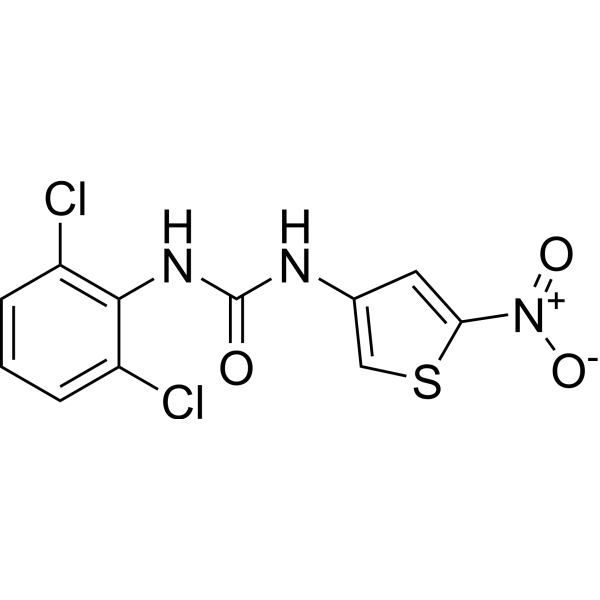
-
- HY-W127408
-
|
|
Biochemical Assay Reagents
|
Others
|
|
1,2,3-Tripalmitoleoyl-rac-glycerol is a triacylglycerol containing palmitoleic acid at the sn-1, sn-2 and sn-3 positions. It reduces erythrocyte deformability in a concentration-dependent manner in the Reid filtration assay. Hepatic levels of 1,2,3-tripalmitoleoyl-rac-glycerol are increased in a JAK2L mouse model of hepatic steatosis. 1,2,3-Tripalmitoleoyl-rac-glycerol plasma levels are reduced in patients with predialysis renal disease.
|
-
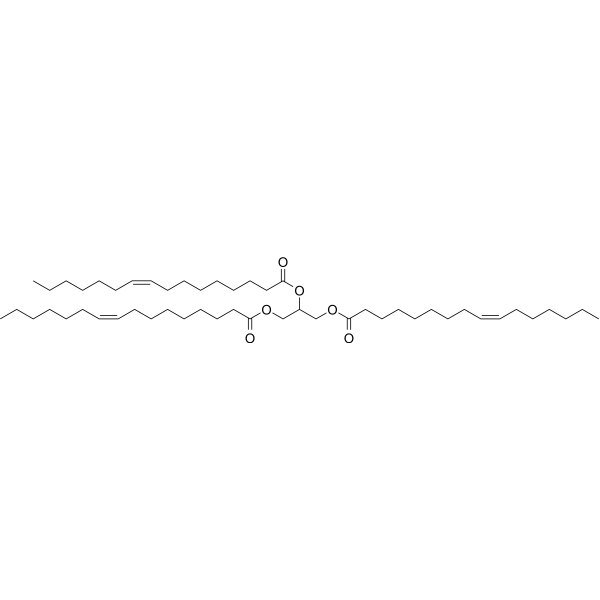
-
- HY-N0142
-
Phloretin
Maximum Cited Publications
12 Publications Verification
NSC 407292; RJC 02792
|
SGLT
Endogenous Metabolite
GLUT
|
Metabolic Disease
Cancer
|
|
Phloretin (NSC 407292; RJC 02792) is a flavonoid extracted from Malus pumila Mill., has anti-inflammatory activities. Phloridzin is a specific, competitive and orally active inhibitor of sodium/glucose cotransporters in the intestine (SGLT1) and kidney (SGLT2). Phloretin inhibits Yeast-made GLUT1 as well as Human erythrocyte GLUT1 with IC50values of 49 μM and 61 μM, respectively .Phloretin has the potential for the treatment of rheumatoid arthritis (RA) and allergic airway inflammation .
|
-

-
- HY-B1005
-
|
8-Quinolinol
|
Bacterial
Antibiotic
|
Cancer
|
|
8-Hydroxyquinoline (8-Quinolinol) is a lipophilic metal chelator that can be used as a fungicide .8-Hydroxyquinoline shows the MIC range of 27.56-55.11 μM (4-8 μg/mL) against the clinical isolates of Neisseria gonorrhoeae. 8-Hydroxyquinoline can bind to copper form complexes and transport copper into cells. 8-Hydroxyquinoline increases in the number of micronucleated polychromatic erythrocytes and can also make hair depigmented in mice .
|
-
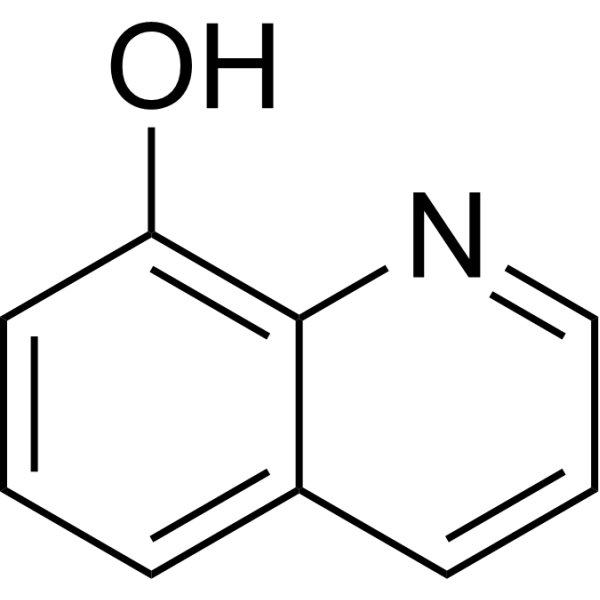
-
- HY-W130236
-
|
|
Cholinesterase (ChE)
|
Cancer
|
|
Methylene Violet 3RAX is a phenazine dye to stain the mitochondria of cells. Methylene Violet 3RAX can change the molecular structure of DNA, undermine the module of DNA, and induce the generation of the reactive singlet oxygen. Methylene Violet 3RAX shows inhibition for human erythrocyte AChE and human plasma BChE with an Kis of 1.58, 0.51 μM, respectively. Methylene Violet 3RAX has the potential for the research of potential photosensitizers for mitochondrial targeting action in PDT (photodynamic therapy) .
|
-

-
- HY-148034
-
|
|
Others
|
Infection
|
|
Plm IV inhibitor-1 (compound 6) is a potent plasmepsin IV (Plm IV) inhibitor with IC50s of 4.1, 0.80, 0.25, 0.35 µM for Plm I, Plm II, Plm IV, Cat D, respectively .
|
-
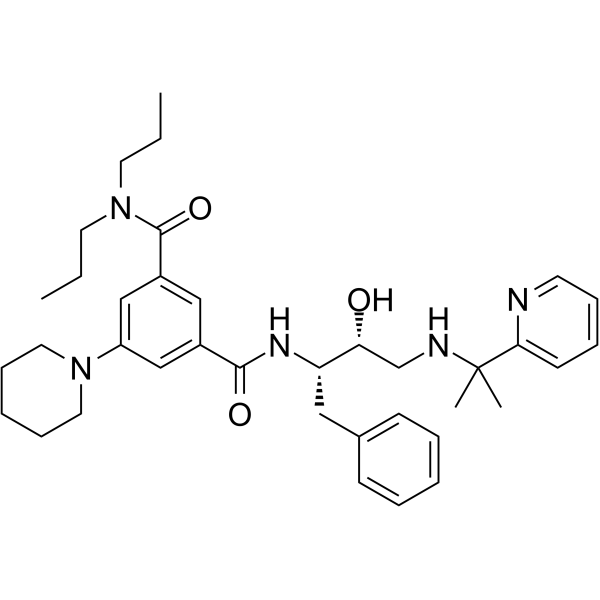
-
- HY-128129
-
|
|
Urea Transporter
|
Metabolic Disease
|
|
UT-B-IN-1 (UTBINH-14) is a reversible, competitive and selective urea transporter-B (UT-B) inhibitor with IC50 values of 10 and 25 nM for human and mouse UT-B, respectively. UT-B-IN-1 shows low toxicity and high selectivity for UT-B over UT-A isoforms. UT-B-IN-1 increases urine output and reduces urine osmolality of mice. UT-B-IN-1 can be used for diuretic mechanism research .
|
-
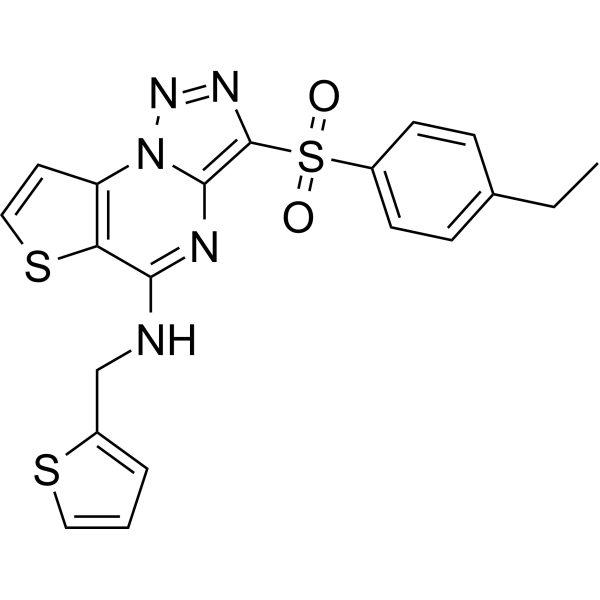
-
- HY-14280
-
|
|
COMT
|
Neurological Disease
Cancer
|
|
Entacapone is a potent, reversible, peripherally acting and orally active catechol-O-methyltransferase (COMT) inhibitor. Entacapone inhibits COMT from rat brain, erythrocytes and liver with IC50 values of 10 nM, 20 nM, and 160 nM, respectively. Entacapone is selective for COMT over other catecholamine metabolizing enzymes, including MAO-A, MAO-B, phenolsulphotransferase M (PST-M) and PST-P (IC50s>50 µM). Entacapone can be used for the research of Parkinson's disease . Entacapone serves as a inhibitor of FTO demethylation with an IC50 of 3.5 μM, can be used for the research of metabolic disorders .
|
-
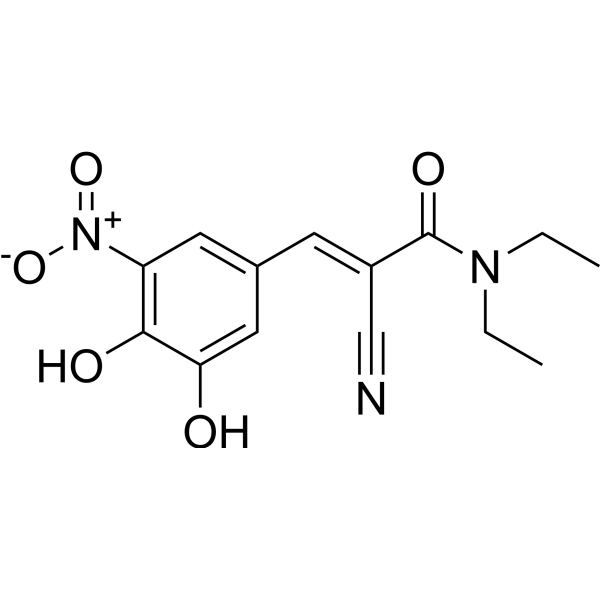
-
- HY-14280A
-
|
|
COMT
|
Neurological Disease
|
|
Entacapone sodium salt is a potent, reversible, peripherally acting and orally active catechol-O-methyltransferase (COMT) inhibitor. Entacapone sodium salt inhibits COMT from rat brain, erythrocytes and liver with IC50 values of 10 nM, 20 nM, and 160 nM, respectively. Entacapone sodium salt is selective for COMT over other catecholamine metabolizing enzymes, including MAO-A, MAO-B, phenolsulphotransferase M (PST-M) and PST-P (IC50s>50 µM). Entacapone sodium salt can be used for the research of Parkinson's disease . Entacapone sodium salt serves as as a inhibit of FTO demethylation with an IC50 of 3.5 μM, can be used for the research of metabolic disorders .
|
-
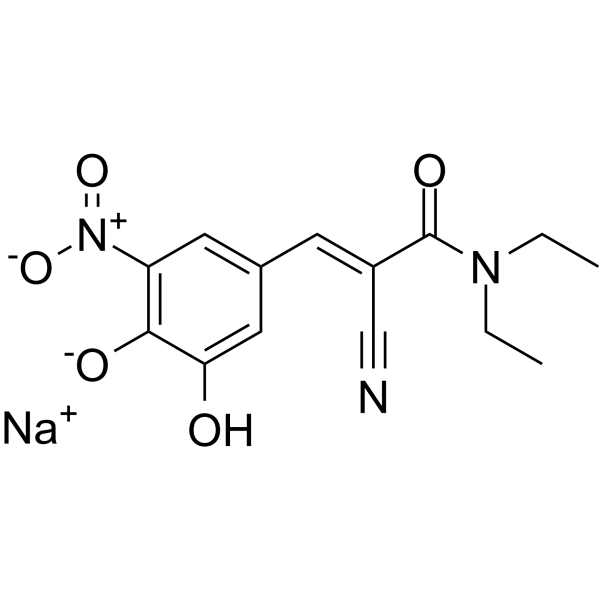
-
- HY-P5446
-
|
|
Bacterial
|
Others
|
|
BMAP-18 is a biological active peptide. (BMAP-18 is a truncated form of the antimicrobial peptide BMAP-27. Bovine myeloid antimicrobial peptide-27 (BMAP-27) belongs to the Cathelicidin family of peptides which displays rapid bactericidal activity against Staphylococcus aureus, Streptococcus uberis, and Escherichia coli. BMAP-27 is cytotoxic to human erythrocytes and neutrophils, although at higher than microbicidal concentrations. BMAP-18 displays much higher cell selectivity as compared to parental BMAP-27 because of its decreased hemolytic activity and retained antimicrobial activity.)
|
-
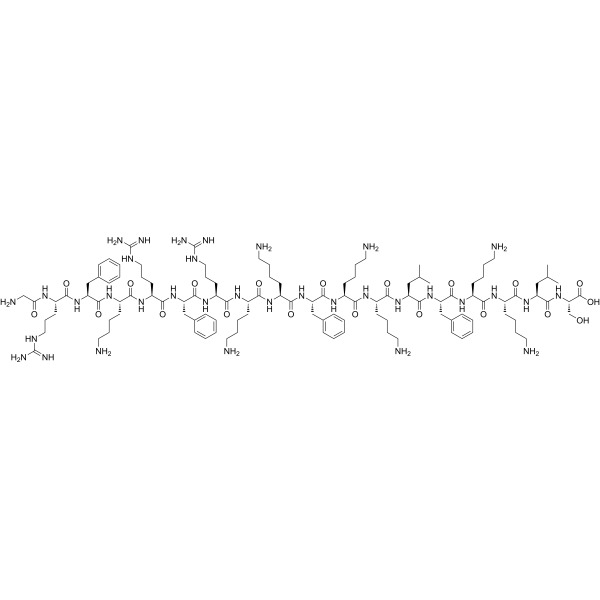
-
- HY-N0142R
-
|
NSC 407292 (Standard); RJC 02792 (Standard)
|
SGLT
Endogenous Metabolite
GLUT
|
Metabolic Disease
Cancer
|
|
Phloretin (Standard) is the analytical standard of Phloretin. This product is intended for research and analytical applications. Phloretin (NSC 407292; RJC 02792) is a flavonoid extracted from Malus pumila Mill., has anti-inflammatory activities. Phloridzin is a specific, competitive and orally active inhibitor of sodium/glucose cotransporters in the intestine (SGLT1) and kidney (SGLT2). Phloretin inhibits Yeast-made GLUT1 as well as Human erythrocyte GLUT1 with IC50values of 49 μM and 61 μM, respectively .Phloretin has the potential for the treatment of rheumatoid arthritis (RA)?and allergic airway inflammation .
|
-
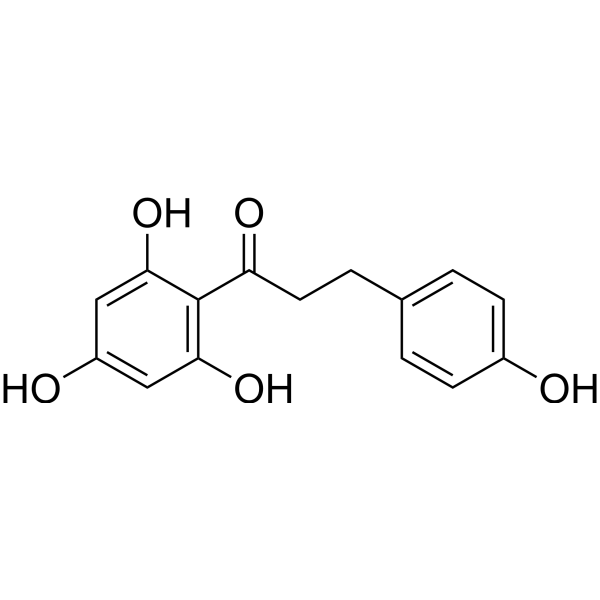
-
- HY-14280S
-
|
|
COMT
|
Neurological Disease
|
|
Entacapone-d10 is the deuterium labeled Entacapone. Entacapone is a potent, reversible, peripherally acting and orally active catechol-O-methyltransferase (COMT) inhibitor. Entacapone inhibits COMT from rat brain, erythrocytes and liver with IC50 values of 10 nM, 20 nM, and 160 nM, respectively. Entacapone is selective for COMT over other catecholamine metabolizing enzymes, including MAO-A, MAO-B, phenolsulphotransferase M (PST-M) and PST-P (IC50s>50 µM). Entacapone can be used for the research of Parkinson's disease[1]. Entacapone serves as a inhibitor of FTO demethylation with an IC50 of 3.5 μM, can be used for the research of metabolic disorders[2].
|
-
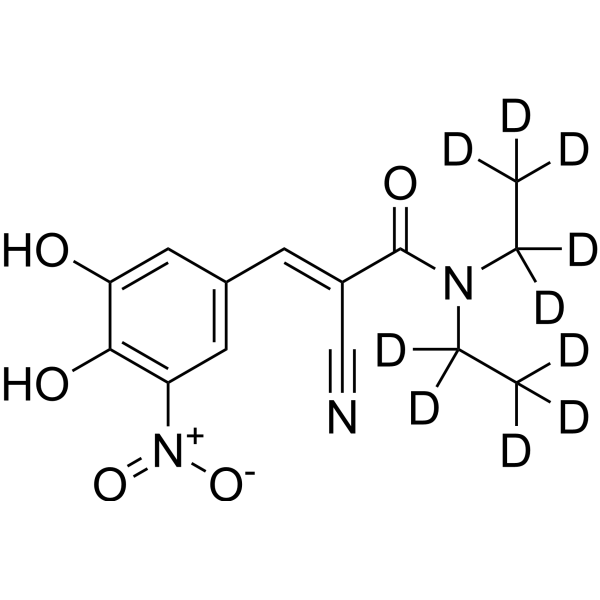
-
- HY-14280S2
-
|
|
COMT
|
Neurological Disease
|
|
(E)-Entacapone-d10 is the deuterium labeled Entacapone. Entacapone is a potent, reversible, peripherally acting and orally active catechol-O-methyltransferase (COMT) inhibitor. Entacapone inhibits COMT from rat brain, erythrocytes and liver with IC50 values of 10 nM, 20 nM, and 160 nM, respectively. Entacapone is selective for COMT over other catecholamine metabolizing enzymes, including MAO-A, MAO-B, phenolsulphotransferase M (PST-M) and PST-P (IC50s>50 µM). Entacapone can be used for the research of Parkinson's disease[1]. Entacapone serves as a inhibitor of FTO demethylation with an IC50 of 3.5 μM, can be used for the research of metabolic disorders[2].
|
-
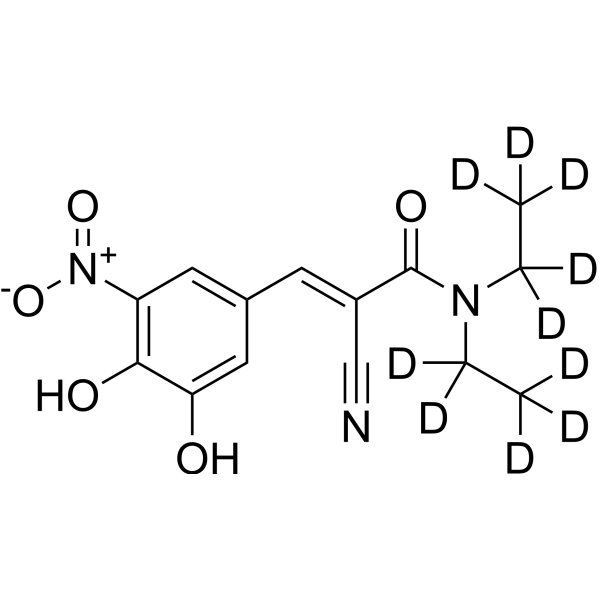
-
- HY-14280R
-
|
|
COMT
|
Neurological Disease
Cancer
|
|
Entacapone (Standard) is the analytical standard of Entacapone. This product is intended for research and analytical applications. Entacapone is a potent, reversible, peripherally acting and orally active catechol-O-methyltransferase (COMT) inhibitor. Entacapone inhibits COMT from rat brain, erythrocytes and liver with IC50 values of 10 nM, 20 nM, and 160 nM, respectively. Entacapone is selective for COMT over other catecholamine metabolizing enzymes, including MAO-A, MAO-B, phenolsulphotransferase M (PST-M) and PST-P (IC50s>50 µM). Entacapone can be used for the research of Parkinson's disease . Entacapone serves as a inhibitor of FTO demethylation with an IC50 of 3.5 μM, can be used for the research of metabolic disorders .
|
-

| Cat. No. |
Product Name |
Type |
-
- HY-119491
-
|
|
Biochemical Assay Reagents
|
|
Ethyl Tricosanoate is a long-chain saturated fatty acid ethyl ester, which exists in small amounts in C. conicum and C. conicum. Free acid reduces the hemolytic activity of Staphylococcus aureus delta toxin on human erythrocytes. Both ethyl ester and free acid can be used as standards for the analysis of lipid mixtures.
|
-
- HY-W127408
-
|
|
Biochemical Assay Reagents
|
|
1,2,3-Tripalmitoleoyl-rac-glycerol is a triacylglycerol containing palmitoleic acid at the sn-1, sn-2 and sn-3 positions. It reduces erythrocyte deformability in a concentration-dependent manner in the Reid filtration assay. Hepatic levels of 1,2,3-tripalmitoleoyl-rac-glycerol are increased in a JAK2L mouse model of hepatic steatosis. 1,2,3-Tripalmitoleoyl-rac-glycerol plasma levels are reduced in patients with predialysis renal disease.
|
| Cat. No. |
Product Name |
Target |
Research Area |
-
- HY-D0844
-
|
L-Glutathione oxidized; GSSG; Oxiglutatione
|
Endogenous Metabolite
Reactive Oxygen Species
|
Metabolic Disease
|
|
Glutathione oxidized (L-Glutathione oxidized) is produced by the oxidation of glutathione. Detoxification of reactive oxygen species is accompanied by production of glutathione oxidized. Glutathione oxidized can be used for the research of sickle cells and erythrocytes .
|
-
- HY-P1629
-
|
|
Bacterial
Fungal
Antibiotic
|
Infection
|
|
Temporin A is a short alpha-helical antimicrobial peptide isolated from the skin of the frog Rana temporaria. Temporin A is effective against a broad spectrum of Gram-positive bacteria. Temporin A interacts directly with the cell membrane of the microorganism and it is non-toxic to erythrocytes at concentrations that are antimicrobial. Temporin A also has antifungal activities (against yeast-like Candida albicans) .
|
-
- HY-P5650
-
|
|
Peptides
|
Infection
|
|
Bombolitin I is an antimicrobial peptide derived from bumblebee venom. Bombolitin I can lysate erythrocyte and liposome .
|
-
- HY-P5652
-
|
|
Peptides
|
Infection
|
|
Bombolitin II is an antimicrobial peptide derived from bumblebee venom. Bombolitin II can lysate erythrocyte and liposome .
|
-
- HY-P5653
-
|
|
Peptides
|
Infection
|
|
Bombolitin III is an antimicrobial peptide derived from bumblebee venom. Bombolitin III can lysate erythrocyte and liposome .
|
-
- HY-P5654
-
|
|
Peptides
|
Infection
|
|
Bombolitin IV is an antimicrobial peptide derived from bumblebee venom. Bombolitin IV can lysate erythrocyte and liposome .
|
-
- HY-P5727
-
|
|
Peptides
|
Infection
|
|
HR1 is a mastoid protease. HR1 can increase the permeability of human erythrocyte membrane. HR1 can induce cytoplasmic membrane permeation in bacteria and mast cells .
|
-
- HY-P4663
-
|
NSC 350591
|
Peptides
|
Cancer
|
|
Val-Gly-Ser-Glu (NSC 350591) is an ECF-A tetrapeptide. Val-Gly-Ser-Glu dose-dependently increases the number of human eosinophils, but not neutrophils, rosetting with complement-coated sheep erythrocytes (EAC3b) .
|
-
- HY-P5344
-
|
Fluorigenic PEXEL peptide
|
Peptides
|
Others
|
|
Dabcyl-LNKRLLHETQ-Edans (Fluorigenic PEXEL peptide) is a biological active peptide. (This FRET substrate peptide for Plasmepsin V (PMV) is derived from the conserved Plasmodium Export Element (PEXEL) motif of Histidine-Rich Protein II (HRPII). PMV is an ER aspartic protease that recognizes and cleaves the RXL sequence within the PEXEL motif of proteins exported by human malaria parasite Plasmodium falciparum, allowing them to translocate into host erythrocytes.)
|
-
- HY-P5446
-
|
|
Bacterial
|
Others
|
|
BMAP-18 is a biological active peptide. (BMAP-18 is a truncated form of the antimicrobial peptide BMAP-27. Bovine myeloid antimicrobial peptide-27 (BMAP-27) belongs to the Cathelicidin family of peptides which displays rapid bactericidal activity against Staphylococcus aureus, Streptococcus uberis, and Escherichia coli. BMAP-27 is cytotoxic to human erythrocytes and neutrophils, although at higher than microbicidal concentrations. BMAP-18 displays much higher cell selectivity as compared to parental BMAP-27 because of its decreased hemolytic activity and retained antimicrobial activity.)
|
| Cat. No. |
Product Name |
Target |
Research Area |
-
- HY-P99720
-
|
ACE-536; luspatercept–aamt
|
TGF-beta/Smad
|
Metabolic Disease
|
|
Luspatercept (ACE-536) is a recombinant modified ActRIIB fusion protein that binds with transforming growth factor β superfamily ligands. Luspatercept increases the erythrocyte numbers and promotes maturation of erythroid precursors. Luspatercept binds with GDF11 and inhibits Smad2/3 signaling. Luspatercept can be used for the research of anemia .
|
| Cat. No. |
Product Name |
Category |
Target |
Chemical Structure |
| Cat. No. |
Product Name |
Chemical Structure |
-
- HY-D0844S
-
1 Publications Verification
|
|
Glutathione oxidized- 13C4, 15N2 is the 13C and 15N labeled Glutathione oxidized (HY-D0844). Glutathione oxidized is produced by the oxidation of glutathione. Detoxification of reactive oxygen species is accompanied by production of glutathione oxidized. Glutathione oxidized can be used for the research of sickle cells and erythrocytes[1][2].
|
-

-
- HY-B0312S
-
|
|
|
Dipyridamole-d20 is the deuterium labeled Dipyridamole. Dipyridamole is a phosphodiesterase inhibitor that blocks uptake and metabolism of adenosine by erythrocytes and vascular endothelial cells[1][2][3].
|
-

-
- HY-12784AS
-
|
|
|
Cycloguanil-d4 (hydrochloride) is the deuterium labeled Cycloguanil hydrochloride. Cycloguanil hydrochloride, the active metabolite of Proguanil, acts on malaria schizonts in erythrocytes and hepatocytes[1].
|
-

-
- HY-B0312S1
-
|
|
|
Dipyridamole-d16 is the deuterium labeled Dipyridamole. Dipyridamole (Persantine) is a phosphodiesterase inhibitor that blocks uptake and metabolism of adenosine by erythrocytes and vascular endothelial cells.
|
-

-
- HY-12542S
-
|
|
|
Dantrolene- 13C3 is the 13C3 labeled Dantrolene. Dantrolene (F368), a muscle relaxant, non-competitively inhibits human erythrocyte glutathione reductase. Ki and IC50 values are 111.6 μM and 52.3 μM, respectively. Dantrolene is a ryanodine receptor antagonist and Ca2+ signaling stabilizer. Dantrolene can be used for the research of muscle spasticity, malignant hyperthermia, Huntington's disease and other neuroleptic malignant syndrome.
|
-

-
- HY-14280S
-
|
|
|
Entacapone-d10 is the deuterium labeled Entacapone. Entacapone is a potent, reversible, peripherally acting and orally active catechol-O-methyltransferase (COMT) inhibitor. Entacapone inhibits COMT from rat brain, erythrocytes and liver with IC50 values of 10 nM, 20 nM, and 160 nM, respectively. Entacapone is selective for COMT over other catecholamine metabolizing enzymes, including MAO-A, MAO-B, phenolsulphotransferase M (PST-M) and PST-P (IC50s>50 µM). Entacapone can be used for the research of Parkinson's disease[1]. Entacapone serves as a inhibitor of FTO demethylation with an IC50 of 3.5 μM, can be used for the research of metabolic disorders[2].
|
-

-
- HY-14280S2
-
|
|
|
(E)-Entacapone-d10 is the deuterium labeled Entacapone. Entacapone is a potent, reversible, peripherally acting and orally active catechol-O-methyltransferase (COMT) inhibitor. Entacapone inhibits COMT from rat brain, erythrocytes and liver with IC50 values of 10 nM, 20 nM, and 160 nM, respectively. Entacapone is selective for COMT over other catecholamine metabolizing enzymes, including MAO-A, MAO-B, phenolsulphotransferase M (PST-M) and PST-P (IC50s>50 µM). Entacapone can be used for the research of Parkinson's disease[1]. Entacapone serves as a inhibitor of FTO demethylation with an IC50 of 3.5 μM, can be used for the research of metabolic disorders[2].
|
-

Your information is safe with us. * Required Fields.
Inquiry Information
- Product Name:
- Cat. No.:
- Quantity:
- MCE Japan Authorized Agent:


























































